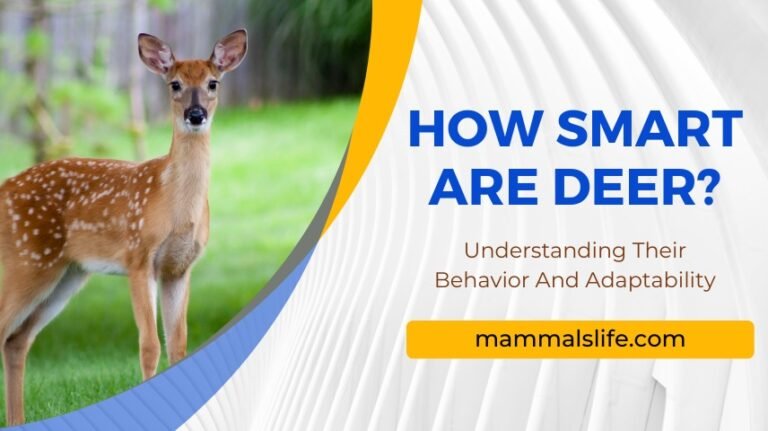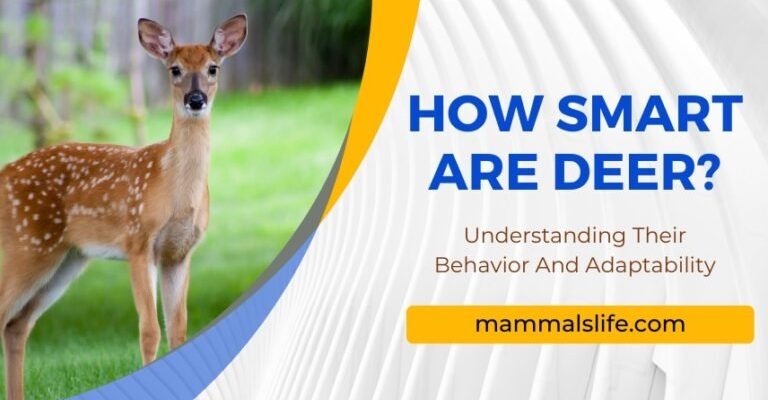
Imagine red deer as the quiet, clever kid in class. You might not notice them right away, but when they do show up, they often surprise you with their insights and skills. In this article, we’ll dive into the fascinating world of red deer, exploring their cognitive abilities and behaviors. Think of it as a mini exploration into their minds and how they navigate their environment.
Understanding Red Deer: An Overview
Red deer are among the largest species of deer in Europe and parts of Asia. They’re known for their majestic antlers, which can grow up to a meter long in males. But beyond their stunning appearance, these animals are quite intriguing. They usually live in herds, which helps with social learning, a key element in their intelligence. Typically, a herd is made up of females and their young, while males often separate themselves, especially during the rutting season.
Social structures in red deer are fascinating. The females often help each other raise their young, creating a network of support that enhances survival rates for the calves. This cooperative behavior suggests a level of social intelligence that is crucial for their survival in the wild. You might be wondering how they communicate within these groups. Well, they use a mix of vocalizations, body language, and even scent marking.
The Cognitive Abilities of Red Deer
When we talk about intelligence in animals, we often think of problem-solving skills and the ability to learn. Red deer aren’t shy when it comes to showing these traits. Research indicates that they can remember locations of food sources and water. If they find a particularly good spot to graze, they’re likely to return to it later. This memory is essential, especially in their natural habitat, where resources can be scarce.
Another interesting aspect of their cognition is their ability to adapt to their environment. For instance, in areas with heavy human presence, red deer can quickly learn to avoid danger. They might change their feeding schedule or habitat use to stay safe. Honestly, it’s a bit like how we adapt our routines when we hear about traffic jams. Adaptability is a hallmark of intelligence, and red deer showcase this quite well.
Moreover, studies have shown that red deer can recognize individual herd members. They can distinguish between familiar and unfamiliar faces, which is vital for maintaining social bonds. It’s similar to how we recognize friends and family! This ability to identify and remember individuals helps strengthen their herd dynamics and improves cooperation.
Communication: The Social Savvy of Red Deer
Communication among red deer is rich and varied. They use a variety of sounds—grunts, bleats, and even barks—to convey different messages. For example, a mother may use softer sounds to call her fawns, while a male might emit louder calls to assert dominance during the rutting season. This vocal variety indicates not only their communication skills but also their emotional intelligence.
Body language also plays a significant role in how red deer interact. They have specific postures and movements that can express submission, aggression, or curiosity. Think of it like reading between the lines in a conversation. Just as we pick up on social cues, red deer are adept at interpreting the body language of their companions. This skill is essential for maintaining harmony within a herd.
Scent marking is another key aspect of their communication. Male red deer often engage in scent marking to establish territory and attract females. They rub their antlers on trees or specific ground areas to leave their scent, signaling their presence to others. It’s like leaving a post-it note for everyone else to see, saying, “I’m here! This is my corner!”
Problem Solving: The Clever Nature of Red Deer
When it comes to problem-solving, red deer show surprising abilities. For example, if a food source is out of reach, they might use surrounding objects to help them access it. Some have been observed standing on their hind legs to reach higher branches. It’s an impressive display of ingenuity, proving that they can think outside the box—or, in this case, outside the bush.
Even more fascinating is how red deer navigate challenges posed by their environment. During harsh winters, they modify their foraging strategies, sometimes even venturing into new areas for food. This adaptability isn’t just survival; it’s a sign of smart decision-making. Think about it—if you had to move to a new city for a job, you’d research neighborhoods and commute options to find the best fit. Red deer do something similar when it comes to their foraging.
Moreover, their ability to learn from experience plays a huge part in their problem-solving skills. If a specific area becomes too dangerous due to predators, red deer will usually avoid that area in the future. It shows how they can learn and adapt based on their experiences, making intelligent choices to enhance their survival.
Emotional Intelligence in Red Deer
You might not think about emotions when it comes to animals, but red deer display signs of emotional intelligence. They form strong bonds within their herds, especially between mothers and their fawns. These familial ties are built on trust and nurturing, which are essential for the young deers’ survival.
The interaction between herd members can be quite emotional. For instance, when a fawn is separated from its mother, it often demonstrates distress through vocalizations and frantic searching. This shows that red deer experience attachment, akin to what we feel when we’re apart from loved ones. It’s a clear sign of depth in their emotional world.
Additionally, red deer are known to exhibit empathy-like behaviors. Studies have shown that they may respond to the distress of others, often approaching or staying close to an injured or stressed member. This empathy helps reinforce social bonds and ensures that no individual is left to struggle alone. It’s heartening to think about how these animals care for one another, showing that their intelligence is not just cognitive but emotional too.
Why Understanding Red Deer Matters
So, why should we care about the intelligence of red deer? For one, understanding their cognitive abilities helps us appreciate the complexity of wildlife. It challenges the stereotype that animals operate solely on instinct. When we recognize their smarts, it fosters a greater respect for their habitats and the importance of conservation efforts.
Moreover, red deer are often at the center of human-wildlife interactions in many regions. By understanding their behaviors, we can implement better management practices that benefit both deer populations and local communities. Whether it’s mitigating conflicts or ensuring safe habitats, knowledge is power.
Lastly, learning about red deer can inspire us on a broader scale. Their ability to adapt, communicate, and form social bonds mirrors human experiences in many ways. This connection can deepen our appreciation for nature and reinforce the need to protect the environment we share with these remarkable creatures.
Red deer are a stunning example of how intelligence can manifest in the animal kingdom. From their problem-solving skills to their emotional intelligence, these creatures showcase a rich tapestry of cognitive abilities that are often overlooked. Next time you spot a deer, take a moment to consider the amazing mental world it inhabits. By fostering a deeper understanding of these animals, we not only appreciate their beauty but also play a role in their conservation and well-being. So, let’s celebrate these magnificent beings and the intelligence they possess, reminding us that, in nature, there’s often more than meets the eye.

